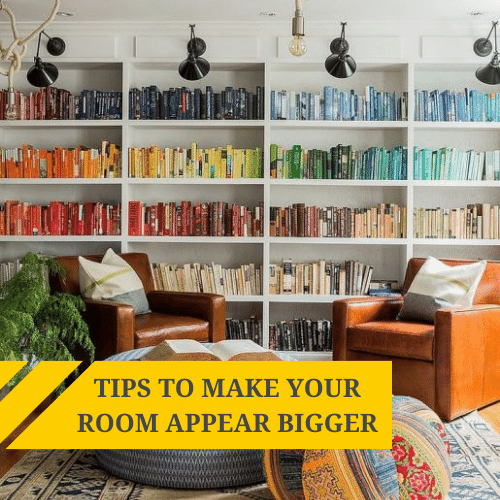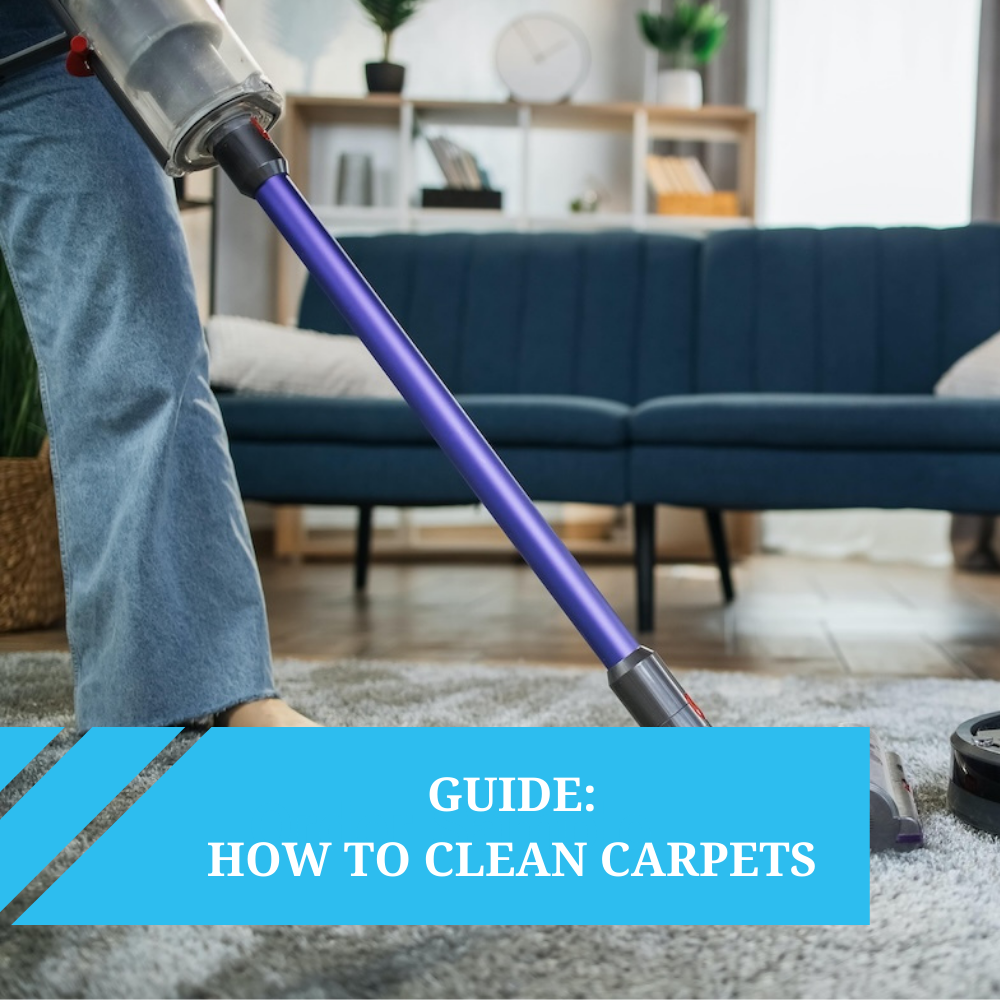We use cookies to make your experience better. To comply with the new e-Privacy directive, we need to ask for your consent to set the cookies. Learn more.
Top Tips: How to Fit a Carpet in Your Own Home
Transform your space effortlessly with our expert tips on DIY carpet fitting. Discover step-by-step instructions and valuable insights for a professional-looking home installation. Elevate your décor with confidence and convenience.
After choosing the perfect carpet to bring your home's interior to life, the next key step is a good fit. While a professional carpet fitter can help to ensure a flawless finish, many people overlook the possibility of achieving an excellent DIY result.
Fitting a carpet may seem like a daunting task, but with the right tools and techniques, it can be done easily at home. By taking the DIY route, you maintain control over your project, gain valuable skills, and have the satisfaction of a job well done. At Best4Flooring, we offer a range of DIY-friendly carpets that are not only easy to install but can also help you save a substantial amount of money.
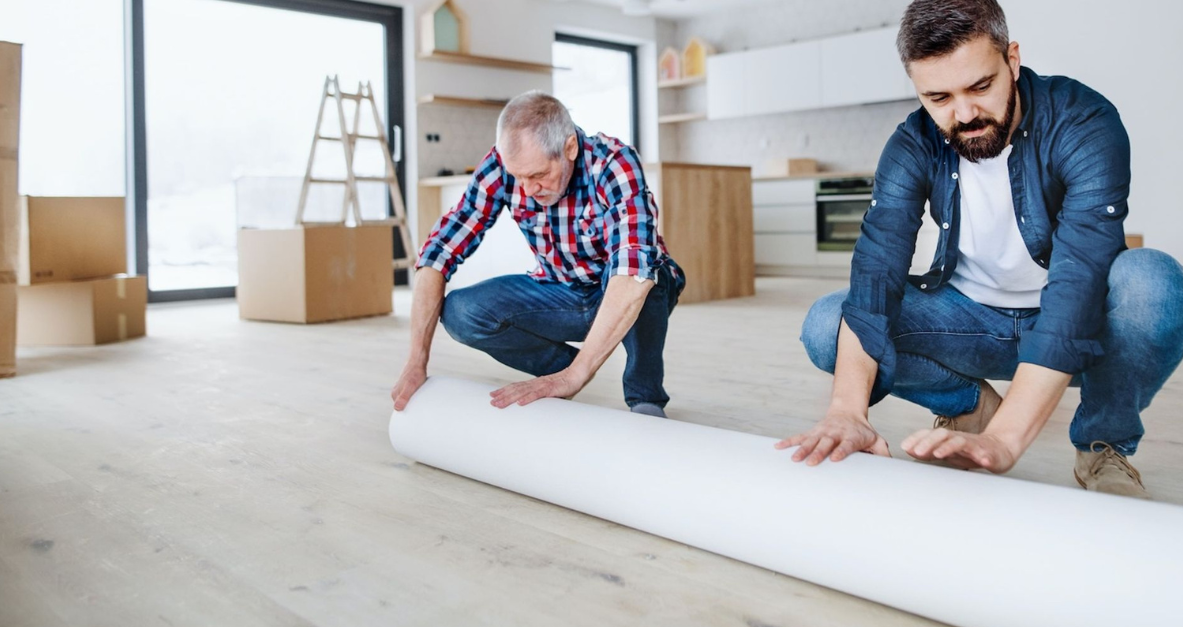

In this guide, we're going to break down exactly how to fit a carpet in your home, making sure you have all the information you need to get a professional-looking finish. So, if you're ready to learn how to measure your new carpet, identify the essential tools and accessories, and master the art of laying your own carpet, keep reading.
Our step-by-step guide is here to support you throughout this exciting home improvement journey.
1) Essential DIY Carpet Fitting Tools
Having the right tools will make the carpet fitting process smoother. Here are some essential items you'll need:
Knee Kicker
Also known as a carpet stretcher, having a decent knee kicker is essential when it comes to carpet fitting. It allows you to hold the carpet in place while you stretch the carpet, ensuring a smooth, wrinkle-free finish and a snug fit.
Top tip: When choosing a knee kicker, opting for one with an extendable handle will allow you to reach further without having to reposition the tool constantly.
Tack Strips
Also known as gripper rods, tack strips are installed along the perimeter of the room to hold the carpet in place. They are essential in ensuring that the carpet edges are secured, maintaining the tension of the stretched carpet.
Heavy Duty Hammer
A heavy-duty hammer will come in handy to secure everything in place . Make sure to get a hammer with a claw end, as this will allow you to remove any misaligned nails easily.
Tape Measure
Measuring your room and the carpet accurately is crucial for achieving a perfect fit. A tape measure should be your go-to tool when taking measurements.
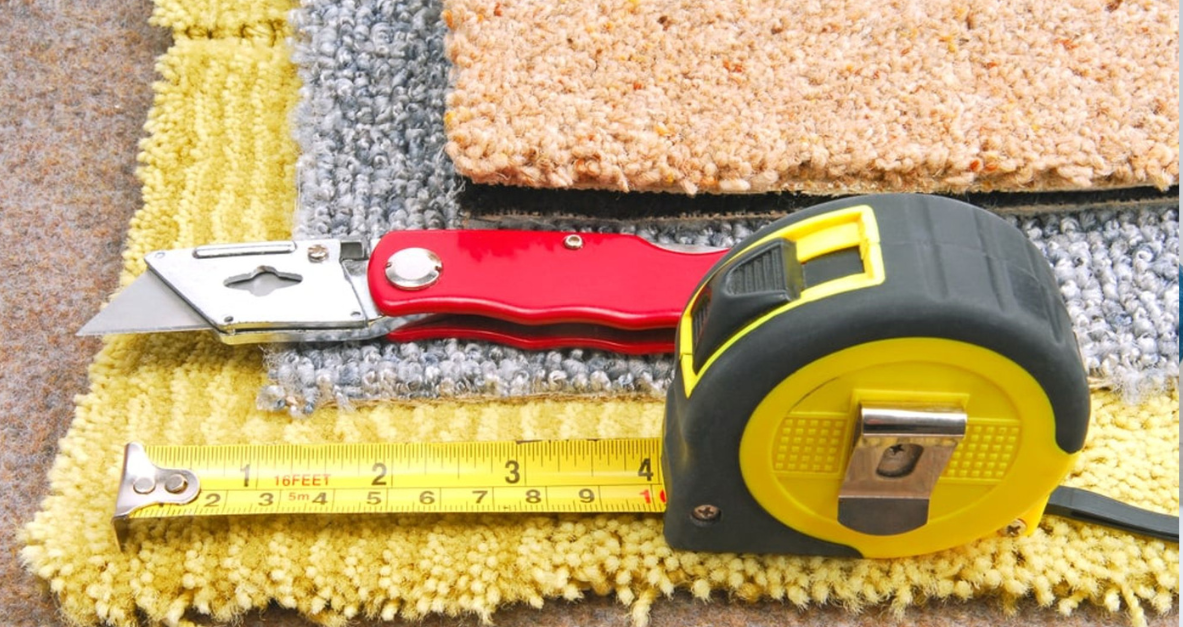

Carpet Tucker
A carpet tucker is used to neatly tuck the edge of the carpet into the space between the wall and the gripper rods or tack strips. It helps in achieving a clean and professional finish along the carpet edges.
Carpet Shears and Knife
You'll need a pair of sharp carpet shears to cut the carpet for precision trimming. A sharp carpet knife will also be necessary for removing excess material and making precise cuts.
Threshold Bar
This tool is used to grip the carpet and hold it in place where it meets with other floor covering, such as wooden or tiled floors. It provides a professional finish to your carpet fitting.
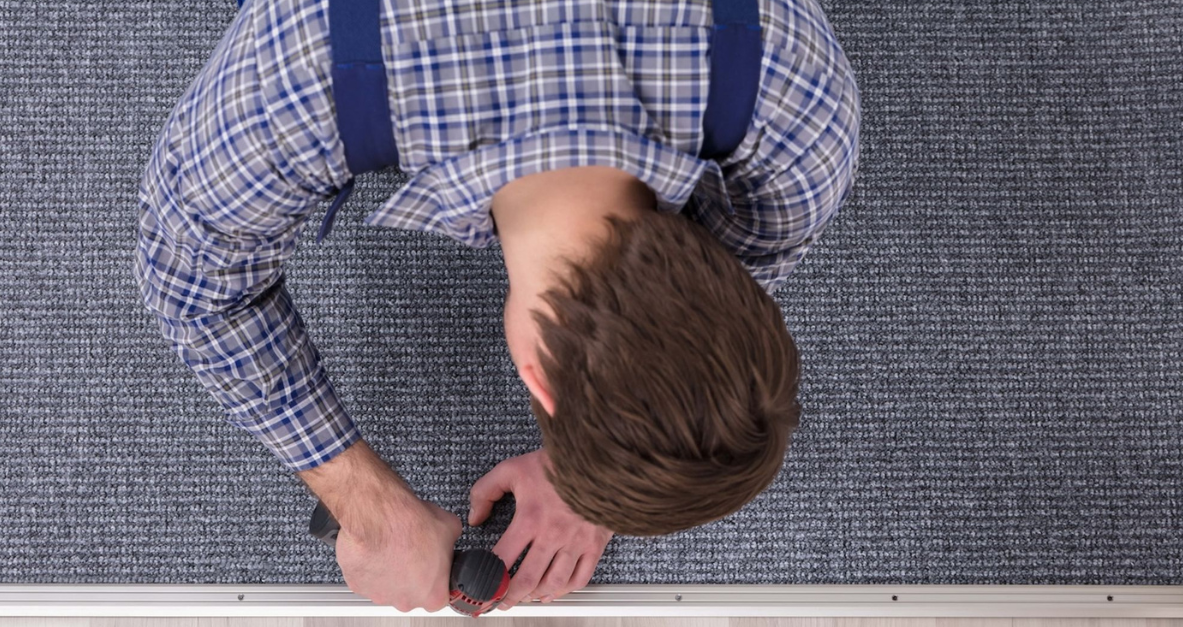

2) How to Measure Carpet
Before purchasing your new carpet, ensure you have the correct measurements. Here's how to measure for a new carpet:
- Measure the length and width of your room.
- Multiply the length by the width to get the total square footage.
- Add 10% to account for waste and cutting errors.
- Divide this number by the width of the carpet you plan to purchase. This will give you the total length of carpet needed.
- If your room has alcoves or unusual shapes, measure them separately and add them to your total length.
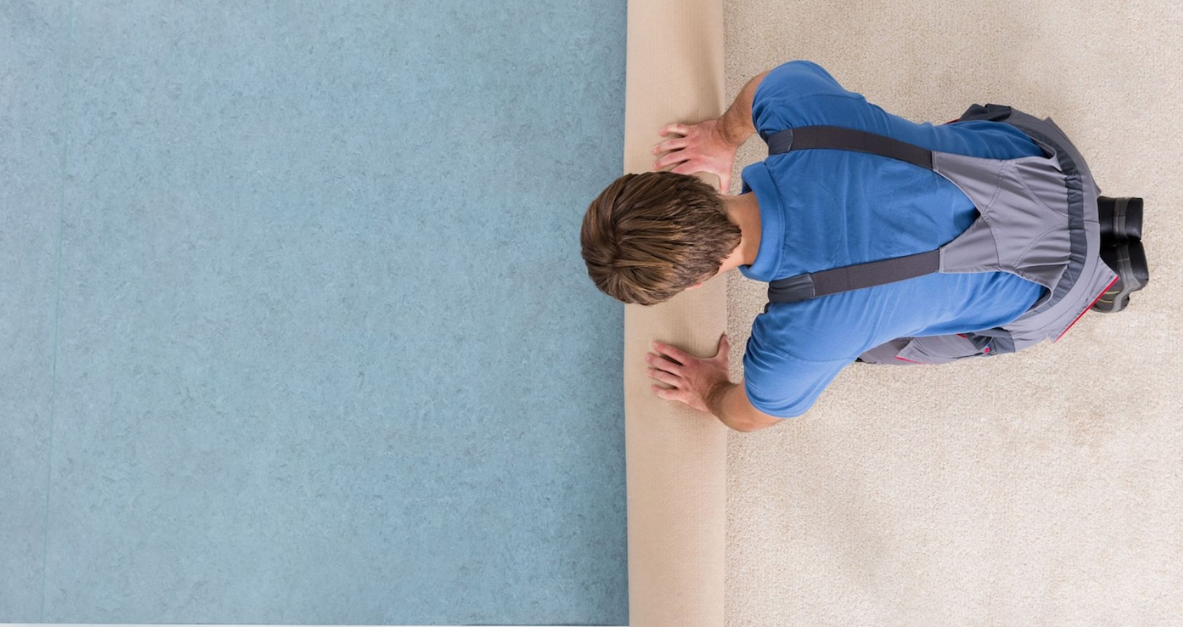

3) Preparing for Carpet Fitting
Once you have purchased your new carpet, it's time to get ready for fitting. Here are some tips:
- Clear the room of all furniture and remove any old carpet or flooring.
- Vacuum the floor to ensure it is clean and free of debris.
- Check for any uneven areas on the floor and level them out if necessary.
- If installing a new subfloor, ensure it is completely dry before laying the carpet.
- Gather all necessary tools and materials.
4) How to Cut Carpet
To trim the carpet properly, you should use a sharp utility knife and work on smaller, manageable pieces. Always cut on the backside of the carpet, where you can see and mark your cut lines clearly.
For precise edge cuts, especially along walls and stopping points, a double-blade wall trimmer is a good idea. This tool helps in making clean, accurate cuts by folding the carpet along the wall and cutting where the fold is.
Always remember to measure twice and cut once!
5) Step-by-Step Instructions on How to Lay Carpet
Correct carpet installation is essential to avoid wrinkling or loosening of the carpet over time. Follow these steps to properly lay your carpet:
Fit the carpet gripper
Begin by securing the carpet gripper around the perimeter of your room, excluding the doorways. The carpet gripper, which essentially looks like narrow strips of wood with upward-facing nails, helps to hold the carpet in place.
Start at one corner and work your way around the room. The nails on the carpet gripper should be pointed towards the wall. Use a hammer to nail the gripper in place at approximately 30cm intervals.
Remember to leave a half-inch gap between the gripper and the wall. This space is allows you to tuck in the edges of the carpet after it's been laid.
Prepare the underlay
Underlay provides cushioning, insulation and soundproofing for your carpet. If you're replacing existing underlay, roll out the new underlay across the entire floor space, ensuring it fits neatly without overlapping.
The underlay should not cover the tack strips, as it holds the carpet in place. Trim the excess underlay with a utility knife.
Measure and cut the carpet
Roll out your carpet in the direction you want it to run, leaving 10cm of extra carpet on each edge.
Measure accurately from the longest wall to leave enough carpet without having to add a seam. Use chalk or masking tape to mark where you'll make your cuts. Using a sharp utility knife, cut along your marks. Remember to cut the carpet slightly larger than the measurements to allow for any mistakes.
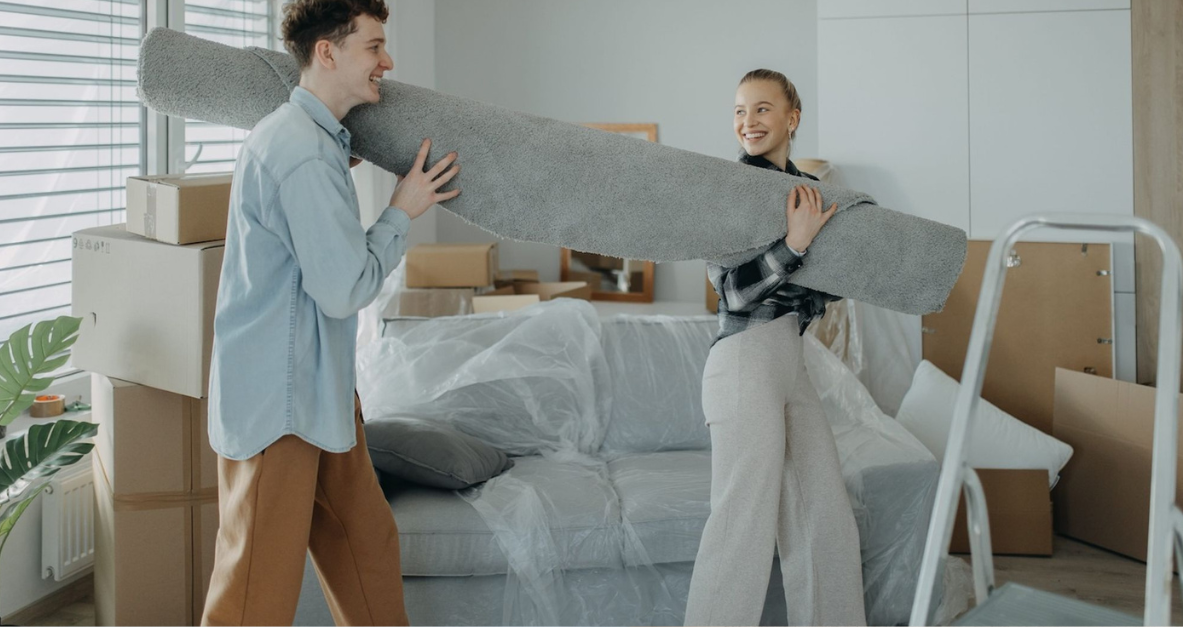

Lay and secure the carpet
Stretching the carpet, ensure it is of adequate size to cover the entire area, overlapping each wall by at least couple of inches for proper fitting. Before securing the carpet, ensure it is positioned correctly by adjusting any creases or bumps. Once you're happy with its position, use a knee kicker to push the edges of the carpet onto the tack strips.
Push your carpet into the corners between the wall and the floor. Place the knee kicker on top of the carpet, just behind the edge of the tack strip (1-1.5 inches from the wall). Now, start kicking the carpet into place using one knee while pushing the carpet onto the tack strip using your other hand.
Repeat this process until you have secured all four corners of the carpet. Continue pushing and securing the edges of the carpet with a knee kicker, making sure to avoid wrinkles and creases.
Trimming and finishing
Once you've secured your carpet in place, it's time to make final adjustments for a polished finish. Using a carpet trimmer or utility knife, cut off any excess carpet along the wall edges.
Be careful not to remove too much carpet and leave enough slack for tucking into the gap between the tack strip and baseboard. Once trimming is complete, use a carpet tucker to push the loose edges of your carpet into the gap between the wall and tack strip. This will give your carpet a clean and professional look.
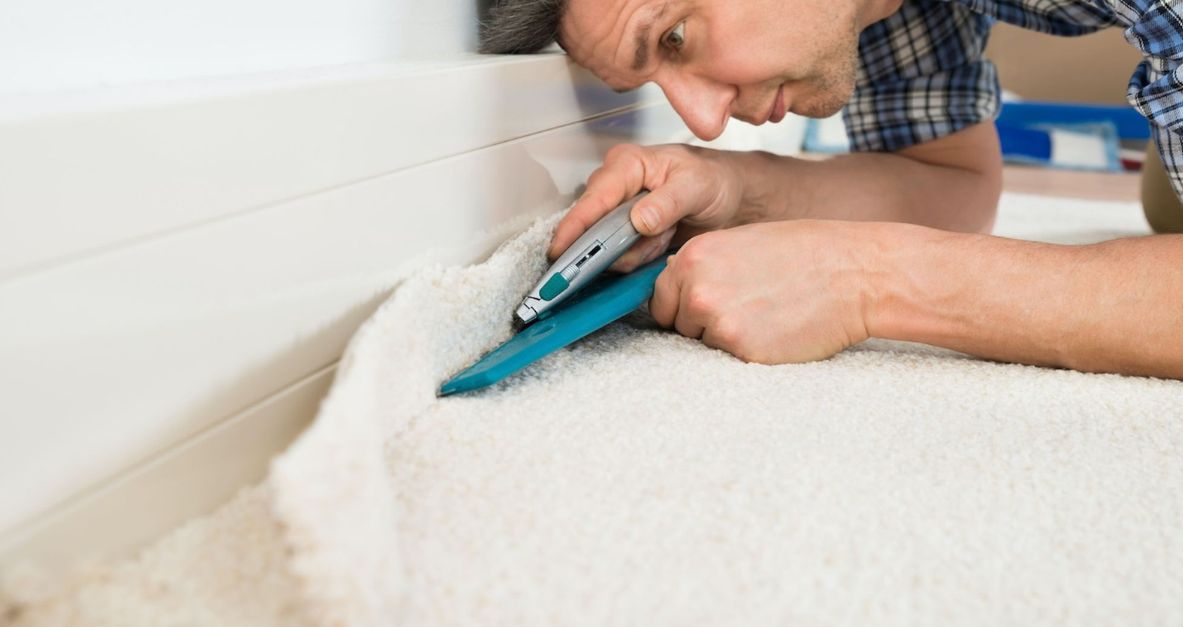

6) Carpet Fitting Aftercare
After fitting your carpet, you might notice some shedding of fibres in the first few weeks. Don't worry, this is completely normal as your carpet settles into its new environment. Regular vacuuming during this period should help to reduce this shedding and keep your new carpet looking its best.
Remember, patience is key when it comes to DIY carpet fitting. Take your time, follow these steps, and you'll have a beautifully fitted carpet to be proud of.
Additional Tips and Advice
- For larger rooms, it may be necessary to seam two sections of carpet together. To do this, lay the two sections next to each other with a slight overlap and use a seaming iron and seaming tape to secure them together.
- If installing carpet on stairs, be sure to attach the carpet securely using tack strips and staples. Use a stair tool to tuck the edges of the carpet under the lip of each step.
- It is important to clean and maintain your carpet regularly to prolong its lifespan. Vacuuming regularly will help remove dirt and debris, while steam cleaning can be done periodically for a deep clean.
- If you are unsure about any part of the process, it is always best to consult a professional for assistance.
- Keep in mind that the tools and techniques used for fitting carpet may vary depending on the type of carpet and flooring material being used. Always refer to manufacturer guidelines for specific instructions.
Key Takeaways
- Measure and plan carefully before beginning the installation process.
- Properly prepare the subfloor by removing all old flooring and repairing any damage.
- Use quality tools and follow proper techniques for stretching, cutting, and securing the carpet in place.
- Allow time for the carpet to settle and regularly maintain it to keep it looking its best.
- Remember, patience and attention to detail are your best allies in this DIY project.
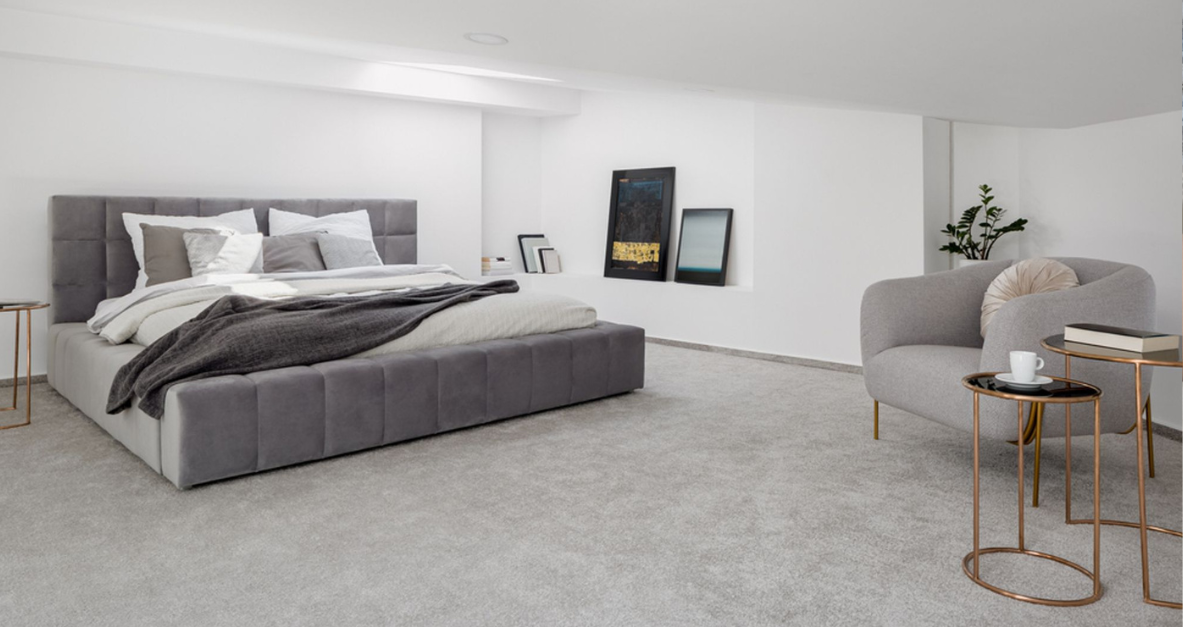

Ready to Get Started?
Find your perfect carpet in our collection and start planning your project. With the right tools, techniques, and a little bit of patience, you'll have a new carpet that not only looks great but also adds comfort and warmth to your home.
Happy fitting!
FAQs about fitting a carpet
Q1: How long does it take to fit carpet?
The duration to fit a carpet can vary depending on the size of the room and your experience level, but usually, it takes a day for an average-sized room. If it's your first time or if the room has a complex layout, it could take longer.
Q2: Can you lay carpet over carpet?
It is not recommended to lay new carpet over old carpet. This can cause issues with unevenness, gaps, and premature wear and tear. It's best to remove the old carpet before installing the new carpet for a smooth and long-lasting result.
However, if you must lay carpet over carpet, ensure the old carpet is clean and flat to prevent future issues. Additionally, be aware that laying new carpet over old could void any manufacturer warranties. Always follow manufacturer guidelines for optimal results.
Q3: How important is it to follow manufacturer guidelines?
Adhering to the manufacturer's instructions is crucial to ensure your carpet fits correctly and lasts long. Manufacturer guidelines provide specific instructions tailored to the type, make, and model of your carpet.
Q4: Can I fit a carpet myself, or should I hire a professional?
It's possible to fit a carpet yourself, especially if you're handy with DIY projects. However, for complex rooms or stairs, or if you encounter issues, it might be best to hire a professional. Consider your skill level, the time you have, and the project's complexity before making a decision.
Q5: What should I do with my old carpet?
If your old carpet is in good condition, consider donating it to a local charity or recycling program. Overall, proper disposal of old carpets is essential to reduce waste and promote sustainability.
Some carpet manufacturers offer recycling services for their products. When disposing of a carpet, make sure to follow any local regulations and guidelines.







